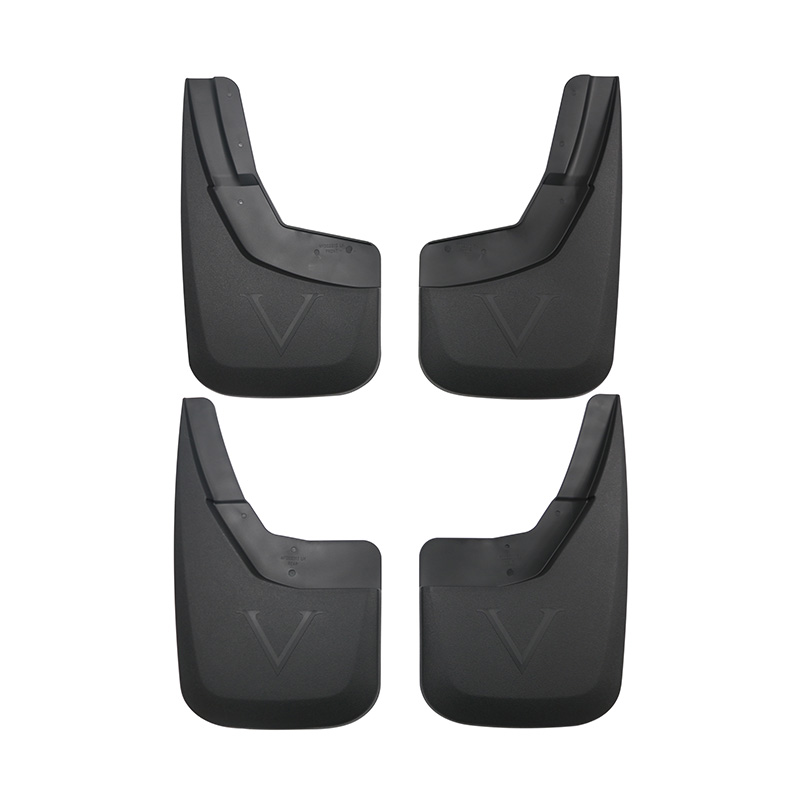2025-10-31
Mud flaps, also known as splash guards, are simple yet highly functional accessories designed to shield vehicles from mud, rocks, water, and road debris. They are typically installed behind the tires, where most road spray originates. The main purpose of mud flaps is to minimize the amount of material thrown by the tires, which can otherwise damage the car’s paintwork, undercarriage, and nearby vehicles. Though small in size, they play a significant role in preserving both aesthetics and structural integrity.
For many drivers, especially those frequently traveling on gravel or muddy roads, mud flaps provide an extra layer of defense that reduces the need for frequent cleaning and repainting. They can also help maintain better visibility for other drivers by preventing splashback on wet surfaces.
The car’s paint is one of the most vulnerable parts when it comes to road damage. Every rotation of a tire can propel sand, stones, and dirty water toward the fender and doors. Over time, this impact can lead to chipping, scratches, and even rust. Mud flaps act as a physical barrier, absorbing or deflecting these particles before they make contact with the painted surfaces.
Here’s how they help preserve your car’s paint over time:
Mud flaps come in a range of materials and designs, each with its own performance benefits. The choice of material influences durability, flexibility, and overall protection efficiency. Below is a comparison of common mud flap materials:
| Material Type | Durability | Flexibility | Protection Level |
| Rubber | High | Excellent | Strong against debris and water |
| Plastic (ABS/PE) | Medium | Moderate | Effective for city driving |
| Metal (Aluminum/Steel) | Very High | Low | Best for off-road and heavy-duty use |
| Composite (Rubber + Plastic) | High | Good | Balanced protection and weight |
Proper installation of mud flaps is essential for optimal protection. Incorrect placement can reduce their effectiveness or even cause damage due to vibration or misalignment. The flaps should be positioned close enough to block debris but not so close that they rub against the tires.
In many vehicles, pre-drilled holes or mounting brackets are provided, simplifying installation. Custom-fit mud flaps usually perform better than universal types, as they are tailored to the shape of the car’s wheel arches.
Although mud flaps are low-maintenance accessories, regular checks can extend their life and ensure consistent protection. Dirt accumulation behind or on the flap can lead to rust or paint wear if ignored for too long. Therefore, cleaning should be part of regular car washing routines.
While mud flaps significantly reduce the amount of debris that hits a vehicle, they are not an absolute solution. Fine dust, salt mist, and high-speed gravel can still reach painted surfaces, particularly in vehicles with high wheel clearance. Therefore, mud flaps should be complemented with regular cleaning, waxing, and underbody protection coatings.
Additionally, improper installation or poor-quality materials can lead to reduced efficiency or even damage. Heavy-duty vehicles, such as trucks and SUVs, often require extended or reinforced designs to provide adequate coverage.
Mud flaps may appear like minor accessories, but their contribution to car paint protection is substantial. By blocking road debris and minimizing splashback, they help extend the life of the vehicle’s finish and reduce maintenance costs. For anyone driving through rain, gravel, or snow, investing in high-quality mud flaps is a simple yet highly effective way to preserve your car’s beauty and performance over time.
